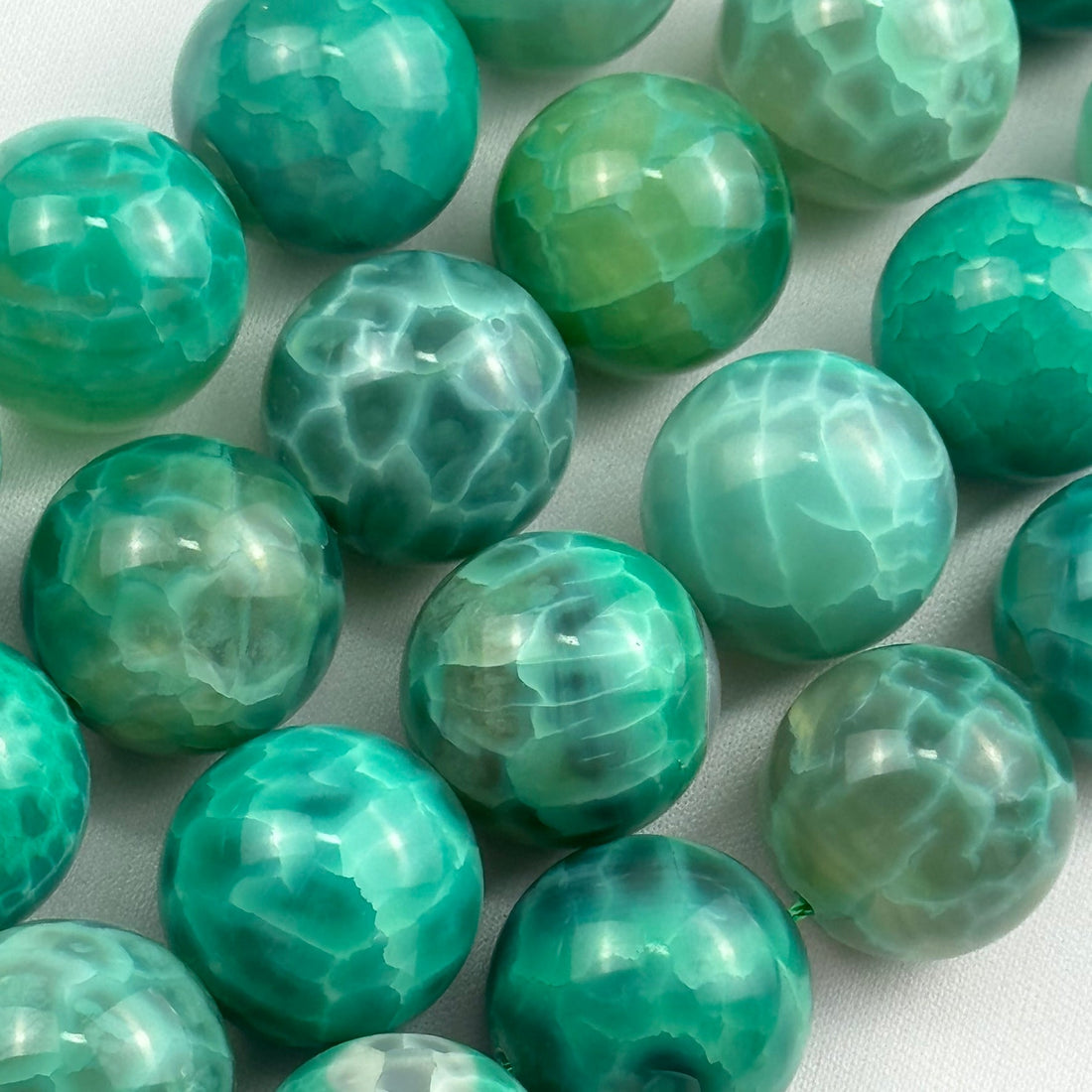
Dyed Green Agate: Understanding the Prevalence of Color Enhancement in Green Agates
Share
Green agate, a variety of chalcedony, is widely admired for its deep, vibrant coloration and translucent beauty. However, natural green agate is relatively rare, leading to widespread dyeing practices in the gemstone industry to achieve consistent and intensified green hues. The enhancement of green agate is not a recent phenomenon; rather, it is a well-documented process deeply rooted in gemological techniques that optimize the visual appeal of chalcedony. In this article, we examine the scientific and commercial reasons behind why green agate is frequently dyed, the methods used, and how to distinguish between natural and treated specimens. For a selection of expertly curated agates, including natural and dyed varieties, visit this exclusive agate gemstone bead collection.
The Rarity of Natural Green Agate and the Need for Dyeing
Purely natural green agate is an uncommon occurrence in nature. Unlike other agates that derive their color from mineral inclusions, most natural green hues in agate result from trace amounts of nickel, chromium, or iron interacting with silica over geological timescales. However, the slow and inconsistent distribution of these elements often leads to pale, uneven, or muted shades rather than the rich greens sought after in jewelry markets.
Due to this natural limitation, dyeing has become a standard practice for enhancing the color saturation and uniformity of green agate. The process ensures that the stone meets consumer expectations for vibrancy while maintaining the durability and translucency of the original chalcedony. If you are interested in exploring a variety of green agates, both natural and dyed, browse this carefully selected collection of agate gemstone beads.
Scientific Methods of Dyeing Green Agate
The dyeing of agate is a controlled process that exploits the porous nature of chalcedony, allowing colorants to penetrate its microcrystalline structure. The most common technique involves immersing the stone in a solution containing metal salts or organic dyes, followed by heat treatment to stabilize the coloration. Iron-based compounds are frequently used to achieve deep green shades, mimicking the natural processes that give rise to genuine green agates.
In some cases, older dyeing methods, such as the immersion of agates in potassium dichromate or nickel nitrate solutions, are still used to create more permanent color transformations. These techniques have been refined over centuries, dating back to ancient Roman and Middle Eastern gemstone enhancement practices. For those looking for high-quality dyed and natural green agate specimens, visit this gemstone bead collection.
Identifying Dyed vs. Natural Green Agate
Distinguishing between natural and dyed green agate requires careful gemological examination. Some key indicators of dyed agate include:
-
Color Concentration Patterns – Dyed green agates often exhibit uneven color distribution, particularly along fractures or porous areas, where the dye accumulates more densely.
-
UV Fluorescence Testing – Many dyed green agates exhibit fluorescence under ultraviolet light, whereas natural green agates generally do not.
-
Reaction to Strong Solvents – Certain dyes may leach out or fade when exposed to strong acids or prolonged UV exposure, while natural green agate retains its color stability.
These diagnostic techniques help both collectors and jewelers make informed decisions about their gemstones. Understanding the difference between natural and dyed green agate is essential for appreciating the craftsmanship behind gemstone enhancement while ensuring transparency in the market. To explore authentic green agate options, browse this premium collection of agate gemstone beads.
Conclusion
Green agate remains one of the most sought-after chalcedony varieties in the jewelry and gemstone industry, but its natural rarity has necessitated the widespread use of dyeing techniques. These enhancements allow for a more vibrant and uniform appearance, aligning with market demands while preserving the stone’s intrinsic durability. Whether naturally occurring or artificially enhanced, green agate holds a unique place in gemology, blending science, artistry, and tradition. To find expertly sourced green agates, visit this handpicked selection of agate gemstone beads.